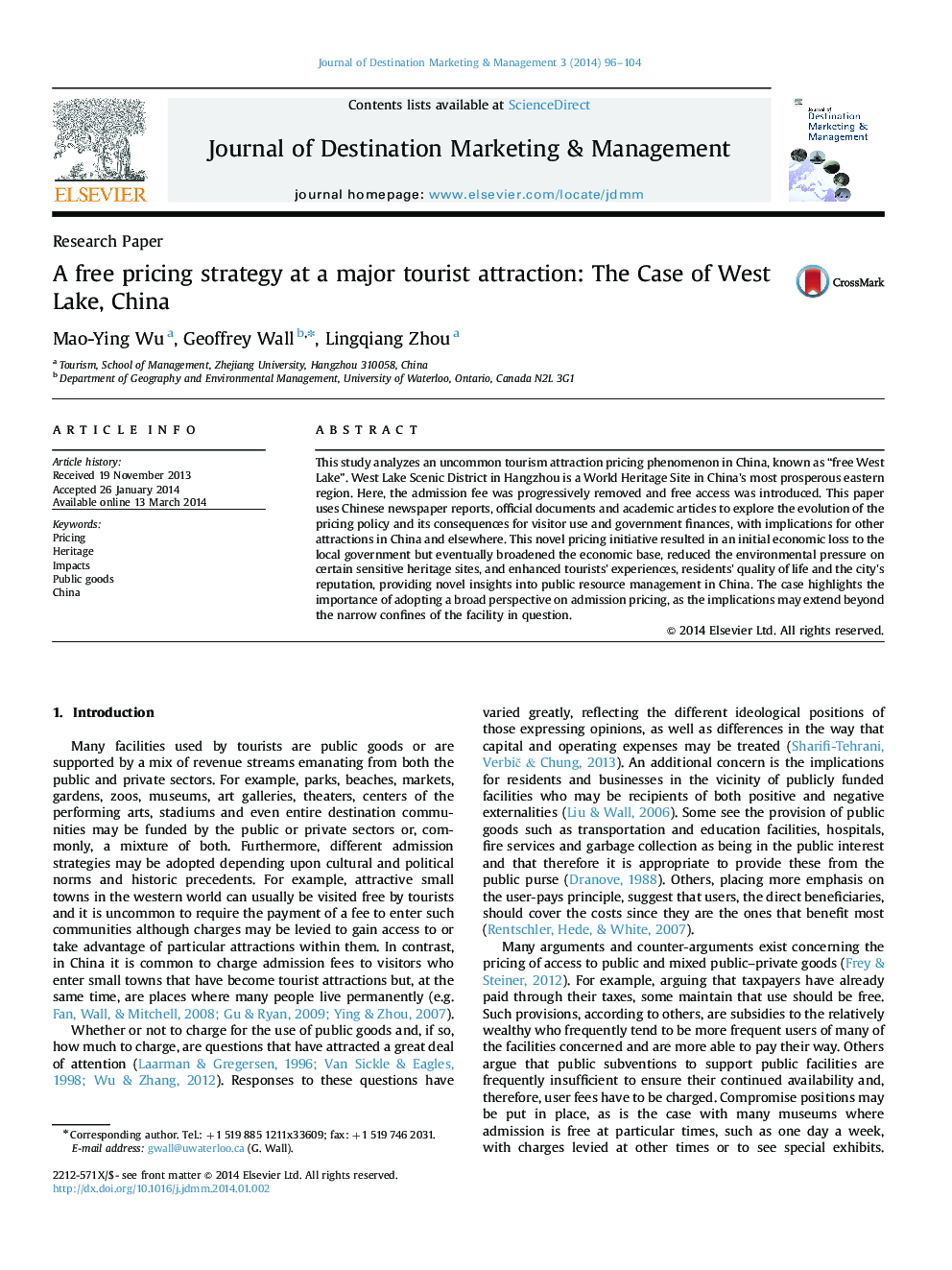| Article ID | Journal | Published Year | Pages | File Type |
|---|---|---|---|---|
| 1011072 | Journal of Destination Marketing & Management | 2014 | 9 Pages |
●Pricing of public goods is examined in a tourism context.●Implications of introducing free admission to a tourism attraction are explored.●Implications for the site, the management agency and surrounding businesses are differentiated.●Resources management issues are explored.●Potential applications elsewhere of the “Free West Lake Model” are considered.
This study analyzes an uncommon tourism attraction pricing phenomenon in China, known as “free West Lake”. West Lake Scenic District in Hangzhou is a World Heritage Site in China׳s most prosperous eastern region. Here, the admission fee was progressively removed and free access was introduced. This paper uses Chinese newspaper reports, official documents and academic articles to explore the evolution of the pricing policy and its consequences for visitor use and government finances, with implications for other attractions in China and elsewhere. This novel pricing initiative resulted in an initial economic loss to the local government but eventually broadened the economic base, reduced the environmental pressure on certain sensitive heritage sites, and enhanced tourists׳ experiences, residents׳ quality of life and the city׳s reputation, providing novel insights into public resource management in China. The case highlights the importance of adopting a broad perspective on admission pricing, as the implications may extend beyond the narrow confines of the facility in question.
